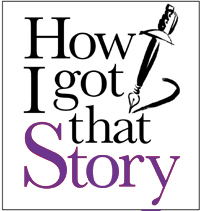Gov. Rick Perry was hoping nobody would notice that his Texas Homeland Security office was gathering information on its roughly 23 million residents — but somebody did.
Jake Bernstein of The Texas Observer got a tip that the governor had the most exhaustive centralized database in the state’s history — and residents were oblivious to its existence.
“Almost immediately after the session [in April 2007], the governor quietly did what everyone had asked him to do, which was move the database to DPS [Texas Department of Public Safety and Technology Resources] where it belonged,” Bernstein says. “So, the right thing happened in the end, but it didn’t happen during the legislative session.”
Bernstein’s insatiable thirst for digging up investigative pieces has now led him to the surrender his red editor’s pen to cover immigration as a staff writer at ProPublica, an independent, non-profit newsroom that strives to produce investigative journalism in the public’s interest.
How long did it take to stitch the story together?
Truth be told, it was kind of a rushed job because we wanted to get it out in the middle of the Texas legislative session, which is only six months long, ending in May. I found out about the database in March [2007]. Of course, the public records request takes a little bit of time, so from the time I received the documents to when the story was put up on our website, the story was really completed in less than two weeks.
How did you obtain the emails mentioned in the story?
That’s a very good question because the [Texas governor’s office] has a policy of deleting their emails — all of the emails in the office — and they delete them after a couple of days to a week. That’s become a big issue, and there’s a bunch of public records activists who have been trying to change that practice. On the other hand, the Department of Public Safety retains a lot of their emails, so I was able to get them from their end. A lot of what I had to do was get as much information as I possibly could from the different agencies and try to stitch it together. Sometimes there were duplications; sometimes there weren’t. Sometimes there were things that one agency should have had and didn’t, but the other agency did. So, it was a jigsaw puzzle kind of deal.
How did you put the puzzle together?
I honestly don’t feel like it’s complete. There were still a lot of questions that I had by the time we put the piece out. I had to sort of pull the trigger at one point when I felt like a good enough amount of information was compiled. There were many law enforcement sources in collaboration with different agencies that weren’t happy about what was going on. Many of these agencies helped me find a path. I had all of these documents that raised their own questions and also gave a sense of what the program was about — and I had a number of off-the-record sources who helped fill in some of the blanks as much as they could.
How do you negotiate the use of anonymous sources?
I think [using anonymous sources] is completely legitimate, but there has to be a legitimate reason for why you would do this. But, I think there’s an over-reliance on anonymous sources. The only reason I would use anonymous sources is if the source could lose his job, or if it was an important perspective within the governmental entity. If this is the case, then I would use the source sparingly while giving the reader context so they can judge the legitimacy of the quote. Anonymous sources are particularly abused when it comes to government officials who want to talk to you but want to go on background. They don’t want to tell you whatever they’re going to tell you on the record, because they’re basically trying to hide themselves.
What was the overall response when the story came out?
It was one of the most instantaneous responses I’ve ever had to a story. Literally, within hours of us posting it on our website, people were talking about it on the Texas House floor. One of the legislators who read it online was sitting in the chamber, went to the back mic and asked questions of the Speaker of the House about it. He said, “I just read this. Is it true? Will you entertain a bill to try to fix this if it is true?” So we had almost instantaneous reaction. After that, all of the daily newspapers had to follow us, [and it was] appearing on the front page of a number of the newspapers around the state. As a result, there were also some editorials written. It was pretty big.
In your opinion, what was the biggest impact of the story?
The biggest impact was an awareness of this program and this database. It let people know that they need to pay attention to what their government is doing.
Read the story that garnered Bernstein a first-place finish in News Story — Long Form (circulation under 55,000):
Part of the 2008 “How I Got That Story” series, in which Academy for Alternative Journalism fellows reveal the processes of the writers and editors who won first-place AltWeekly Awards. These interviews also appear in Best AltWeekly Writing and Design 2008.

